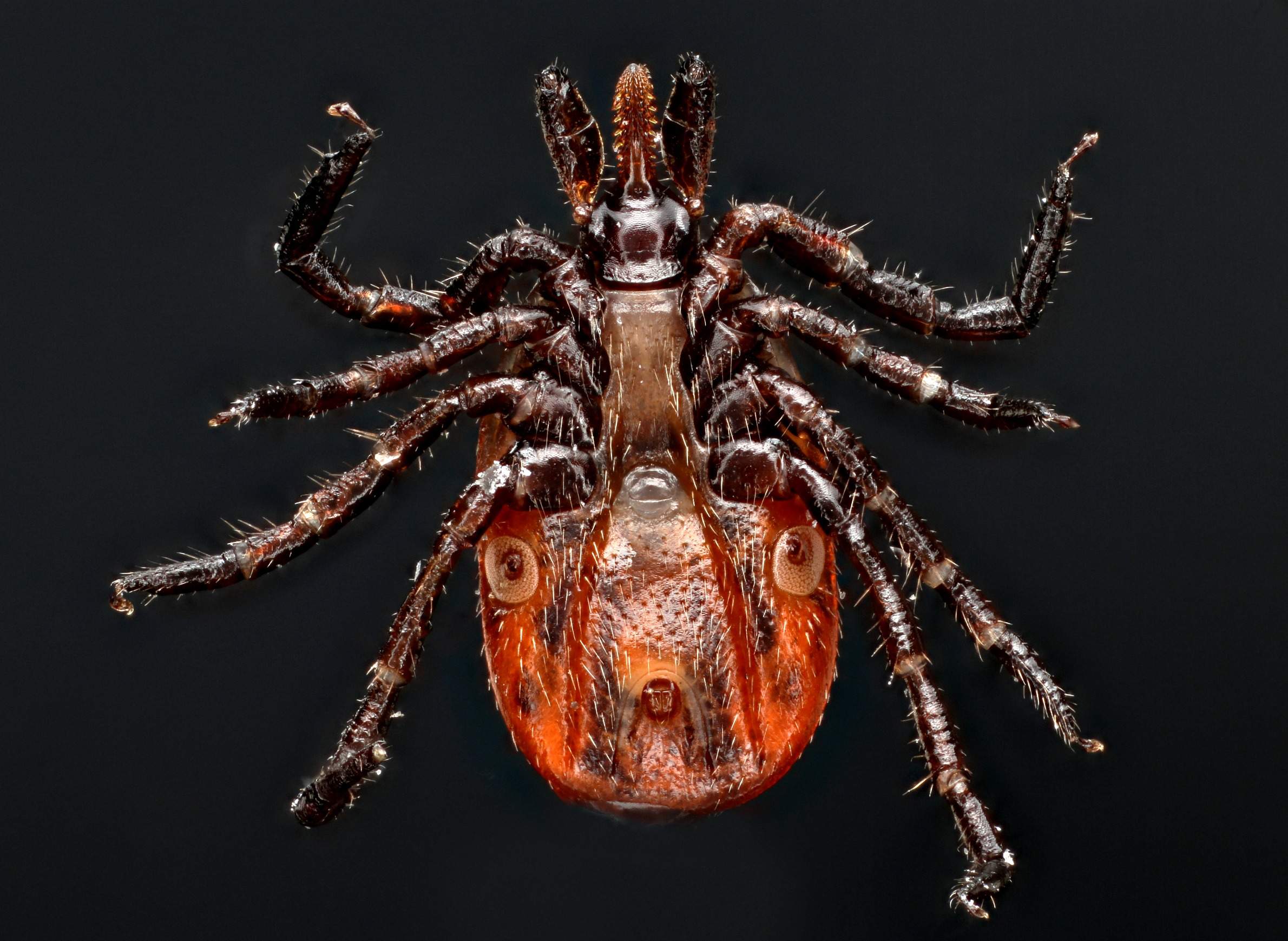
The black-legged tick (Ixodes scapularis) is commonly called a deer tick.

The black-legged tick (Ixodes scapularis) is commonly called a deer tick.
One enduring myth about ticks is that these little bloodsucking creatures hang around on tree branches and leaves, waiting to drop down on an unsuspecting feast. Ticks don't dive-bomb their intended meals, but they do engage in behavior called "questing" where they sit on vegetation with limbs extended, ready to climb on a host that brushes past them.
Wisconsin is home to a handful of tick species, but one stands out: the deer tick, which is responsible for infecting people with the bacteria that cause Lyme disease. First spotted in north-central Wisconsin in 1965, deer ticks became increasingly common around the state in the 1980s, '90s and 2000s. Over the same period, Lyme disease spread as well, turning Wisconsin into one of the nation's hot spots for a growing epidemic.
Susan Paskewitz is a professor in the University of Wisconsin-Madison Department of Entomology who studies diseases transmitted by arthropods like mosquitoes and ticks. Her work in the UW Medical Entomology Laboratory includes research on Wisconsin ticks and tick-borne diseases, particularly factors that help spread Lyme disease among deer ticks and their other wildlife hosts. She discussed ticks and the diseases they carry in a Wednesday Nite @ the Lab lecture on the UW-Madison campus on Aug. 5, 2015, that was recorded for Wisconsin Public Television's University Place.
With Lyme disease continuing to spread around the state, Paskewitz's research has focused on the relationship between deer ticks, the animal hosts that carry pathogens, and the landscapes they inhabit. "The tick distribution is very associated with the greener, the more forested parts of Wisconsin. And that's also where we also see a lot of the Lyme disease," she said.
The first defense against Lyme disease, though, is limiting exposure to deer ticks in the first place. Paskewitz recommends standard precautions for minimizing the chance of being bitten by ticks while spending time outdoors, including using insect repellent, wearing long pants and boots, and even treating clothing with permethrin.
For people who do get bitten by deer ticks, it's important to remove them as soon as possible to reduce the risk of transmission.
"The ideal way to get them off is to just take a nice sharp pair of tweezers, put tweezers down as close to where the tick's mouth parts are into your skin as possible," Paskewitz said. "Slowly exert some backward pressure on it. You don't want to yank it out because you'll leave the mouth parts in your skin. So what you are really trying to do is get the tick to decide it wants to leave, fold up its tent, and pull itself out."
Of course, many thousands of people in Wisconsin acquire Lyme disease every year, and those cases are widely underreported by health care providers. For people who may be infected, Paskewitz urges vigilance. Along with a telltale bull's-eye rash, several other symptoms can indicate Lyme disease, including fever, fatigue and muscle aches.
"It just feels like you got the flu," she said. "You should go to your doctor right away and arrange to get some antibiotic."
Key Facts
Key Quotes